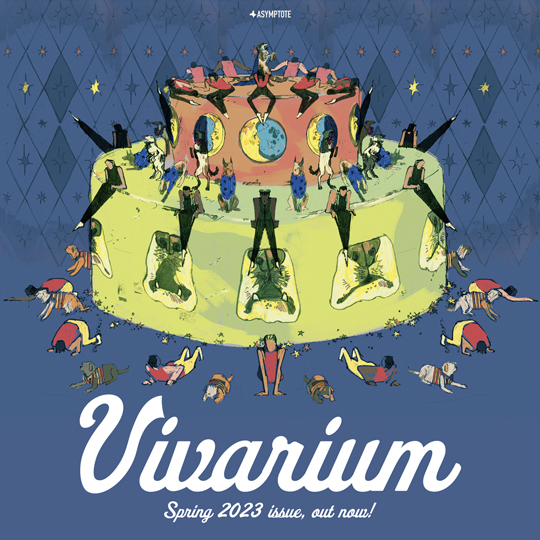Experience the world anew through non-human eyes in “Vivarium,” our Spring 2023 issue! From macaques to marmots, muntjacs to mosshoppers and microscopic prokaryotes, a superabundance of literary life overflows from 30 different countries. In this thriving biosphere, you’ll find work from Estonia and Oman flowering in the same soil as Alaa Abu Asad’s Wild Plants and our first entry from Bolivia via Pulitzer Prizewinner Forrest Gander. The same Pangaean ecosystem sustains our animal-themed special feature headlined by Yolanda González, recipient of the 2001 Premio Café Gijón Prize, and 2018 Booker International longlistee Wu Ming-Yi. Alongside these, there are the always thought-provoking words of Italian poet Franca Mancinelli, which bloom in both the Interview and Poetry section—the latter also shelters Fernando Pessoa, whose brilliant co-translators Margaret Jull Costa and Patricio Ferrari have rendered him in one of his most mordant heteronyms, Álvaro de Campos.
Our Spring 2023 Edition Is Here!

Featuring Fernando Pessoa, Franca Mancinelli, Wu Ming-Yi, and Yolanda González in our animal-themed special feature
Great Material for a Novel: Lucy Jones on Translating Brigitte Reimann
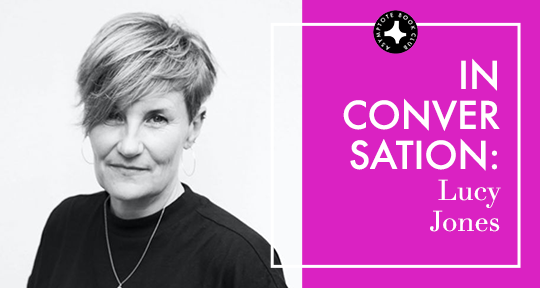
The translation is always another chance to improve a piece of writing stylistically, to make it really sing.
In our March Book Club selection, the sharp and passionate voice of German writer Brigitte Reimann paints a tender portrait of post-war Berlin, when the Wall has yet to go up, but lines have already been drawn, and devotions already divided. In an unflinching autofiction that finally sees an English debut after being long-adored in its original language, Reimann uses the materials from her own life to elucidate the deep ruptures carved into family by politics, the bright, early idealism of socialism in East Germany, and the hope that people hold to amidst the most tumultuous times. In this interview with the translator of Siblings, Lucy Jones, we discuss the storied history of Siblings, the political context necessary to this text, and the meeting-place between art and idealism.
The Asymptote Book Club aspires to bring the best in translated fiction every month to readers around the world. You can sign up to receive next month’s selection on our website for as little as USD20 per book; once you’re a member, join our Facebook group for exclusive book club discussions and receive invitations to our members-only Zoom interviews with the author or the translator of each title.
Samantha Siefert (SS): Lucy, Thank you so much for being here to talk with us about Siblings. Can you tell us a little bit more about the road that led you to translation?
Lucy Jones (LJ): It’s probably not a very conventional one. I graduated in German and in German language and literature, and then I actually didn’t do anything with it for a while; I became a photographer. I did photography for about twelve years, and then I came back to translation just after my daughter was born. This is when I went back to the roots of what I started out doing at university.
I started by pairing up with a good friend who translates in the other direction; together, we’re Transfiction. She translates from English to German, and I translate from German to English, and we’ve been going since about 2008.
SS: You’re known for being a huge advocate for Brigitte Reimann’s work. Can you tell us a little bit about your background with her work in particular, how you came to advocate for her, and eventually translate her?
LJ: Translators often do work as literary scouts or something in-between, and I came across Reimann because I was in a seminar for translators in Berlin. There is quite a good infrastructure here, and in that seminar we were visiting different publishing houses. During one visit, I was given a pile of her work, and it was really warmly recommended to me. When I started reading, I realized—especially when I came across her fiction—that it could have been written now as an historical novel. You didn’t have that kind of patina from, you know, a novel from the past. It was more modern, as though it just happened to be set in the past. I found that really striking. READ MORE…
Translation Tuesday: [Not the truth] by Riccardo Benzina
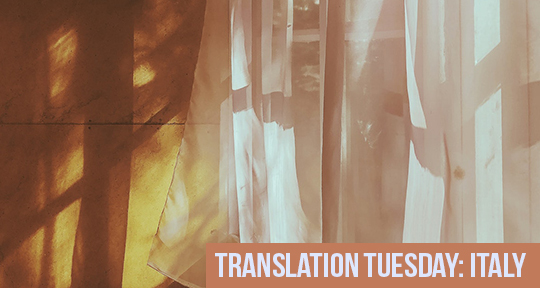
I never told you. / Now I let the trap speak / for me.
For Translation Tuesday, Italian poet Riccardo Benzina shows us the psychic toll of lies upon the liar in this haggard confessional. His lines, slowed nearly to a slurring by ragged breaks and repetitions, and translated with care by Marco Malena, evoke the sort of exhaustion that only prolonged deception can cause. “Worn out is the idea,” indeed.
Not the truth. That’s why I’m telling you
I’d like to rest.
Worn out is the idea.
Yes I’d like to, I’d like to
if I can because
later on the doldrums will turn into a giant strut, almost
an entire world and I will be
entirely taken, you will be
entirely taken, we will be taken.
I’d like to rest my self as well, my self
you leave in the closet every time
burning a merciless cross
on the wall of your chest. The distance
unsewn, a desperate kiss on the windows.
I never told you.
Now I let the trap speak
for me. You’ll see
that I’ve read and not replied, that you don’t receive, you haven’t
received anything. READ MORE…
Visual Spotlight: Some Artists on Developing a New Visual Language of Protest

The Some Artists page is proof of a dream, the dream of art and artists who will forever stay with the people and against the power.
Over the weekend, Iran’s Deputy Attorney General said that punishment for those who encourage others to remove their hijabs would face criminal prosecution, and only days before, it was reported that women who were not wearing the hijab were being barred from the Tehran metro, leaving many unable to go to work. This comes at a time when tensions surrounding the longstanding and long-protested compulsory hijab law are especially high; last year, after Mahsa Amini was killed in police custody following her arrest for allegedly failing to comply with the compulsory hijab law, protests against Amini’s killing and against the compulsory hijab law broke out and grew into a larger protest movement. While the protests were violently repressed by the government, the spirit of protest in Iran has both a longer history and a continuing energy. Many Iranian women continue to go without the hijab in public as a display of defiance, and even prior to the recent protests, resistance to the compulsory hijab law was inextricably linked to older Iranian protest movements. The visual histories of these interconnected protest movements are on display in the work of Some Artists, an anonymous group of artists who began using social media to disseminate art in solidarity with Iranian protesters following protests in 2018. In this edition of our series spotlighting visual content from our archives, we revisit our feature on Some Artists from our Winter 2020 issue.
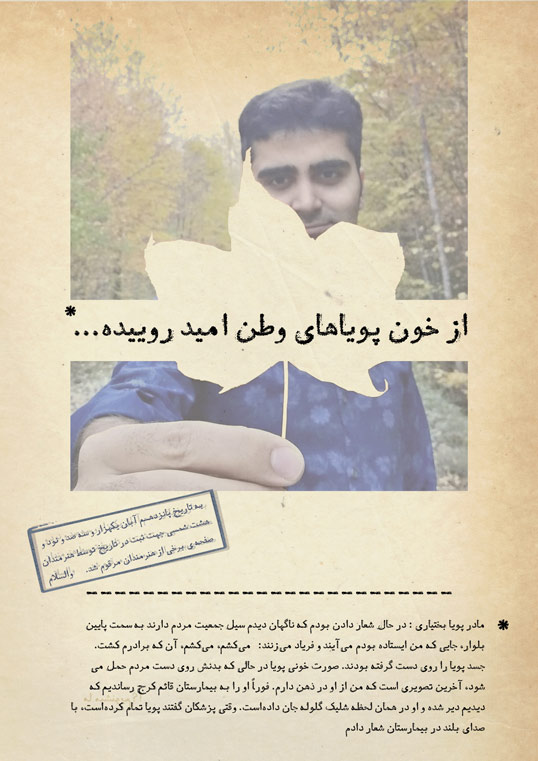
Following the protests of January 2018 and the ensuing silence of the middle class, artists and intellectuals in the face of protests by workers and the rise of the afflicted, we aimed to become a bridge. A visual cry for the afflicted and a platform where artists and intellectuals would be translated beyond class.
The first piece uploaded on Some Artists’ Facebook page was a video clip dedicated to Sina Ghanbari, entitled “(Far)yad” [“Cry 1”], on January 27, 2018.
We realized a lack of precedence of visual language for what we hoped to do, and this made our process hard. Whatever existed before then was either the literature and visual arts belonging to the era of the 1979 Islamic Revolution, which felt aged, or the politicized visual language of the Green Movement of 2009; there was nothing else. To address the issue, we decided that a simplicity in form and content would be our only way to go. READ MORE…
Weekly Dispatches From the Front Lines of World Literature
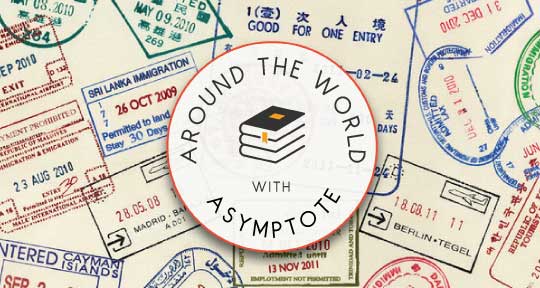
Literary news from Poland, Kenya, and North Macedonia!
In this week of updates on world literature, our Editors-at-Large bring news on an upcoming film adaptation of Władysław Reymont’s The Peasants, a monthly calendar highlighting African writers and literatures, and the most recent winner of the esteemed Golden Wreath in North Macedonia! From Asymptote contributors’ recent accolades to a brief look into Vlada Urošević’s poetry, read on to learn more!
Julia Sherwood, Editor-at-Large, reporting on Poland
A film version of the modern Polish classic, The Peasants by Nobel-prize winning author Władysław Reymont, will hopefully hit the screens later this year, following a lengthy delay caused by COVID and the war in Ukraine. Those familiar with the Gdańsk-based filmmakers Dorota Kobiela and Hugh Welchman will know that this won’t be your run-of-the-mill costume drama; the film uses the same painstaking hand-painted technique that the team pioneered in their earlier acclaimed short film Loving Vincent. Originally scheduled for release in 2022, the production of The Peasants came to a standstill, as twenty-three of the artists working on the film were Ukrainian and based in a studio in Kyiv. Interestingly, it is the film that we have to thank for the new English edition of The Peasants; since the existing translation published in 1924 was rather outdated, Welchman commissioned Anna Zaranko, winner of the 2020 Found in Translation Prize, to translate a couple of chapters for him and subsequently managed to persuade Penguin Classics to publish the complete novel, which is nearly 1000 pages long.
In 2021, one year after Zaranko won it, the Found In Translation Award went to Ewa Małachowska-Pasek and Megan Thomas for their new English version of Tadeusz Dołęga-Mostowicz’s 1932 satirical novel The Career of Nicodemus Dyzma. They discuss the novel with Daniel Goldfarb in the first episode of his series of Encounters with Polish Literature. Now in its third year, this consistently illuminating series of monthly videos that Goldfarb has been producing for the Polish Institute in New York has clocked up twenty-six episodes so far. In Episode 2, which focuses on Andrzej Sapkowski, Goldfarb is joined by David French, who has translated six out of the fantasy writer’s eight novels in the Witcher series into English, as well as all three parts of his Hussite Trilogy. In the most recent Episode 3, Goldfarb and the scholar and translator Benjamin Paloff introduce Leopold Tyrmand, author of one of the great Warsaw novels and popularizer of jazz in mid-twentieth-century Poland, a transformative figure in Polish culture between the death of Joseph Stalin and the post-Stalin thaw.
There have been nominations and prizes galore for Asymptote contributors: Marta Dziurosz has won the First Translation Prize of the UK Society of Authors 2022 for her ‘truly astounding translation’ from the Polish of Marcin Wicha’s Things I didn’t Throw Out, sharing the prize with editors Željka Marošević and Sophie Missing. Mikołaj Grynberg’s heartbreaking collection of short stories, I’d Like To Say Sorry But There’s No One To Say Sorry To, translated by Sean Gasper Bye, has been named a finalist of the Sami Rohr Prize for Jewish literature (the winner to be announced on September 12). Olga Tokarczuk’s monumental The Books of Jacob in Jennifer Croft’s translation finds itself on the shortlist of the 2023 European Bank for Reconstruction and Development Literary Prize alongside fellow Polish author Maciej Hen and Anna Blasiak, translator of his book According to Her (see interview).
And finally, if you are a writer or translator with at least one published book, are currently working on a writing project, are interested in learning more about the Polish literary community, and have a connection with any UNESCO City of Literature outside of Poland, don’t miss the opportunity to apply for a two-month literary residency in Kraków (July 1 to August 31, 2023). The deadline for applications is April 23.
Traitor to Tradition, Resister to Remorse: A Conversation with Kiran Bhat
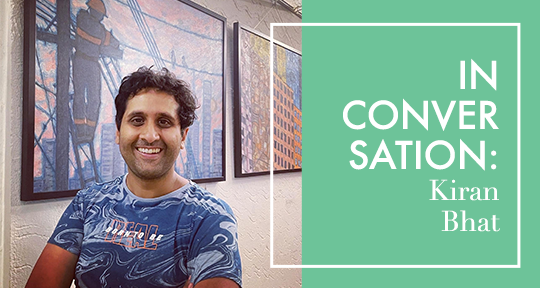
I want to shift the story before the labels set in; I want to blur the border before it has had time to be constructed . . .
Khiran Bhat is true to what he says he is: a “citizen of the world.” Among other things, he has authored poetry volumes in both Spanish and Mandarin, a short story collection in Portuguese, and a travel book in Kannada. He is also a speaker of Turkish, Indonesian, Hindi, Japanese, French, Arabic, and Russian, and has made homes from Madrid to Melbourne, from Cairo to Cuzco.
In this interview, I asked Bhat about writing across genres, self-translating from and into a myriad of languages, and being a writer who identifies as planetary, belonging to no nation—and thus, all nations at once.
Alton Melvar M Dapanas (AMMD): As a polyglot, a citizen of the world, and a writer “writing for the global,” are there authors (especially those writing in any of the twelve languages that you speak) whom you think were not translated well, and therefore deserve to be re-translated?
Kiran Bhat (KB): What an interesting question! I’m rarely asked about translation, and since I dabble in translation, I’m glad to see someone challenge me on a topic that speaks to this side of myself.
It’s a hard one to answer. I would pose that almost all books are badly translated because no one can truly capture what an author says in one language. Every work of translation, no matter how ‘faithful’ it aspires to be, is essentially an interpretation, and that interpretation is really a piece of fiction from the translator. Some people really want ‘authenticity,’ but when I read a translation, I just want something that compels me to keep reading (probably because I’m so aware of the ruse of it all).
For example, a lot of people prefer the Pevear and Volokhonsky translation of War and Peace, but I fell in love with the Constance Garnett translation. This might have been because it’s easy to find on the Internet and I was reading it on my computer while waiting on a ferry crossing Guyana and Suriname in 2012, but Garnett’s effortless storytelling style really made me fall in love with Pierre and Natasha. I can understand why technically Pevear and Volokhonsky are truer to Tolstoy’s sentences and paragraph structures, but I feel riveted when I read the Garnett version. I want to turn the pages and find out what’s going on, and I think that’s important as a reader: to get lost and immersed in a fictional world.
Translation Tuesday: Two Poems by Hagiwara Sakutaro
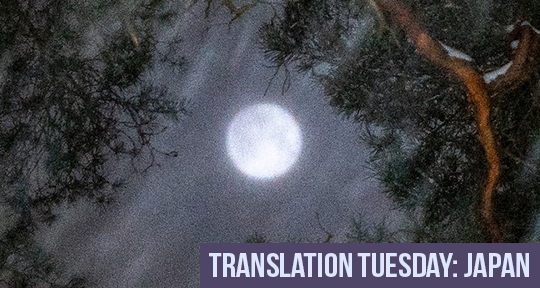
A wretched thieving dog / is howling at the decaying wharf’s moon.
This Translation Tuesday, we deliver distinctive poetry from Hagiwara Sakutaro. In simple, colloquial free verse, sensitively preserved by translator John Newton Webb, Death of a frog and Sad moonlight capture the ominous tonality and unsettling imagery that pervade this singular writer’s repertoire. Tread forward for an introduction to Sakutaro’s dark world then turn back for an insightful special feature from the Spring 2014 issue.
Death of a frog
A frog was killed,
the children circled round and raised their hands,
all of them together,
they raised their adorable,
blood-caked hands,
the moon came out;
a person is standing on the top of a hill.
Under his hat, a face. READ MORE…
This month, we are taking a look at works from world literature that unveil the universal intersections at the centre of society: an empathetic interrogation into the cross-section of contemporary life in a superstore by the inimitable Annie Ernaux; a brilliantly curated selection of humanist stories from the Swahili; and a subtle, delicate look into the nature of happiness as written into dialogue by lauded Polish author, Marek Bieńczyk. Read on to find out more!
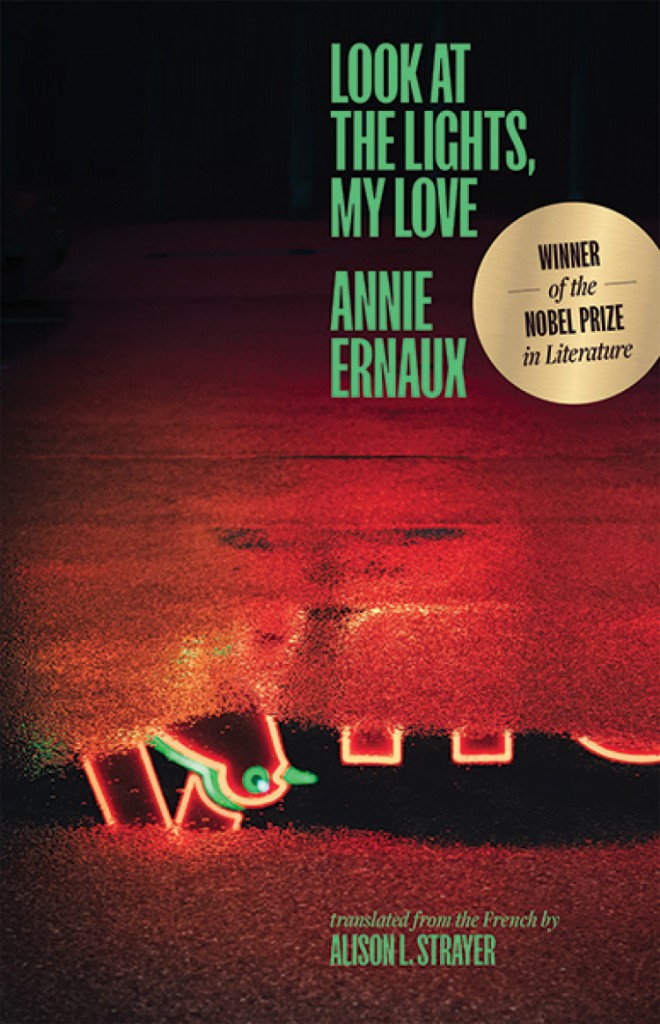
Look at the Lights, My Love by Annie Ernaux, translated from the French by Alison L. Strayer, Yale University Press, 2023
Review by Laurel Taylor, Assistant Editor
Even at its best, ethnography is an ethically tricky subject; at its worst, it can dehumanize, tokenize, and Other the people who fall under its burning eye—an eye so often situated in wealth, power, whiteness, and patriarchy. Annie Ernaux is all too aware of the treacherous ethnographic ground she walks in Regarde les lumières mon amour, originally published in 2014 and translated now into an incisive and unadorned English by Alison L. Strayer as Look at the Lights, My Love. In this brief but gripping nonfiction entry, Ernaux records her various visits to the French big-box store Auchan from November 2012 to October 2013, a period which happens to coincide with the 2013 Rana Plaza building collapse in the Savar sub-district of Dhaka, Bangladesh.
For all its drab ubiquity and late-capitalist imbrication, Ernaux treats the site of the superstore not only as a place perpetuating a unilateral and devastating economics (in the broadest sense of the word), but also one which engages humanity in complex ways—affectively, socially, temporally.
. . . when you think of it, there is no other space, public or private, where so many individuals so different in terms of age, income, education, geographic and ethnic background, and personal style, move about and rub shoulders with each other. No enclosed space where people are brought into greater contact with their fellow humans, dozens of times a year, and where each has a chance to catch a glimpse of others’ ways of living and being. Politicians, journalists, “experts,” all those who have never set foot in a superstore, do not know the social reality of France today.
Indeed, it feels almost taboo in the often inward-facing world of Parisian literature to engage with something so blasé as a big-box store. At one point, Ernaux even says in an aside, “I don’t see Alain Robbe-Grillet, Nathalie Sarraute, or Françoise Sagan doing their shopping in a superstore; Georges Perec yes, but I may be wrong about that.” For me, this is what makes Ernaux’s earnest attempt at engagement all the more relevant (and close-to-home, as I grew up in a squarely middle-class family that did most of its shopping at a big-box store). In addition to the unconventional topic, this particular book also feels difficult to classify. Neither journalism nor something so structured as a dialectic, Look at the Lights, My Love is something more akin to mindfulness. It is an attempt to deliberately undo the asynchronous pace of the superstore—a place where flash sales, labyrinthine design, ever-changing displays, and the press of daily chores all collude to entrap and entangle us in the past, present, and future all at once. Ernaux’s thick descriptions, in trying to circumvent these snares, work to better provide us with “[a] free statement of observations and sensations, aimed at capturing something of the life of the place.”
This week, our editors are bringing news of exciting readings, groundbreaking publications, and community events. From Palestine, a new poetry publication brings translations to the forefront, and in China, a renowned playwright debuts work and honors her community. Read on to find out more!
Carol Khoury, Editor-at-Large for Palestine and the Palestinians, reporting from Palestine
In the month of Ramadan, life in Palestine is relatively quiet, with reduced working hours, afternoons devoted to preparing iftar food, and evenings reserved for prayer or social/familial activities. However, the Ramallah Municipality is making the most of this time; from mid-March to mid-October, the library is holding bi-weekly talks with authors and creative writers to explore and discuss their achievements, enriching the social dialogue on various issues related to the worlds of writers and creators they interact with. The program, titled “The Meaning”, will host sixteen renowned and beloved Palestinian poets and novelists in person. All guests will be speaking in Arabic, though Ramallah Library is considering posting recordings with English subtitles. Keep an eye out for these exciting events!
Just across on the side of the Jordan River, the Palestinian/Jordanian poet Tahseen al-Khateeb surprised everybody this week with publishing the first notebook (daftar) of Dafaater al-Shi‘er (poetry notebooks). Described as “an electronic magazine specialized in poetry and the surrounding arts,” the whole project is the sole effort of al-Khateeb’s. On its Facebook page, he introduces the publication as follows: “Poetic notebooks, made according to the mood of Tahseen al-Khateeb, who translates the notebooks’ pages.” READ MORE…
Roma Literature and Identity: In Conversation With Radka Patočková And Karolína Ryvolová, Part II
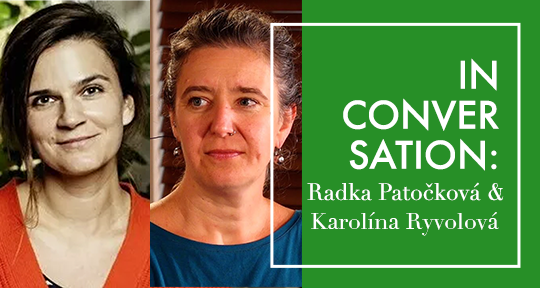
Romani literature . . . is always political and never only individual.
Picking up from yesterday’s interview with Radka Patočková and Karolína Ryvolová on the founding of KHER, the only independent publishing house in the Czech Republic to spotlight Roma literature, today we delve further into Roma literature and identity—its history, notable figures, and ethos—with interviewer and Asymptote Editor-at-Large Julia Sherwood.
Julia Sherwood: What are the main themes, genres, and stylistic features of Czech and Slovak Romani literature?
Karolína Ryvolová (KR): Although the themes have naturally changed over time, the dominant feature and vessel of Romani stories continues to be memory. The writers relate their private histories in different contexts (persecution during World War II, post-war migration, successful pre-1989 integration followed by the tempestuous nineties, and so forth) and in that way contribute to the history of their community, which is still largely ignored by mainstream works of history. An important minority stream is feminist topics, pertaining to the traditionally subordinate role of the Romani woman as opposed to her ambitions and dreams, pioneered by Tera Fabiánová in 1970 and since successfully elaborated on by such writers as Ilona Ferková, Irena Eliášová, Erika Olahová, and Iveta Kokyová. The dynamics of the mutual Romani and non-Romani relationships in society is another regularly recurring theme. Most recently, we have seen the emergence of LGBTQ+ themes in Roma literature and interesting attempts at a complete divorce from ethnic narratives and issues.
JS: Traditionally, Romani culture has been predominantly oral––a good example is Elena Lacková’s memoir, Narodila jsem se pod šťastnou hvězdou (published in English as A False Dawn: My life as a Gypsy woman in Slovakia), which was recorded by Milena Hübschmannová (Czech scholar and founder of Romani studies, who is discussed in greater detail in the first interview). Lacková’s life story, providing an insight into the history and the tough realities of growing up and living as a Roma in twentieth-century Slovakia, also demonstrates the close historical links between Czech and Slovak Roma. Yet it wasn’t until 2022 that the book appeared in Slovak, translated by Júlia Choleva Vrábľová and published by BRaK (see Asymptote’s interview with publisher František Malík). What do you think is the reason for this late reception in the country of its author’s birth?
KR: I have no definite answer. On the one hand, I believe that until recently, most Slovaks have been able to read in Czech and vice versa, with reference to the more than seventy years of joint Czechoslovak history, so a Slovak translation has not been necessary. On the other, it seems from what we are hearing from our Slovak colleagues that the field of Slovak Romani literature is still quite scattered, distributed in fairly isolated hubs such as Nitra, Banská Bystrica, Košice, and Prešov, and it is perhaps not easy to develop a joint initiative in support of one of their classics. While Romani is much more widely spoken and present in Slovakia than in Czechia, there is at present no organisation with the visibility and impact of the likes of KHER in Slovakia. However, Alexander Mušinka from Prešov University has been working on rectifying this oversight. In 2021, he released the first volume of a monograph on Lacková, prefaced by a well-researched biographical paper that showed the breadth of the many years of her journalism for the Slovak Romani magazine Romano nevo ľil. READ MORE…
KHER, A Home For Roma Literature: In Conversation with Radka Patočková and Karolína Ryvolová
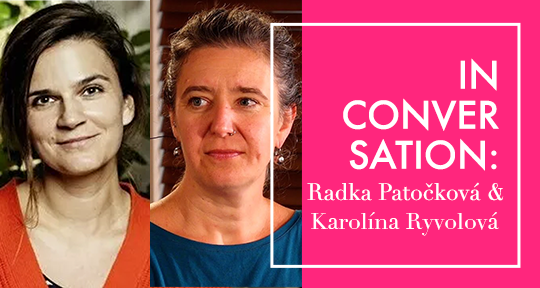
We have to keep exploring the potential of Roma literature so that we are still here in the years to come.
Roma literature has long been suppressed, persecuted, and overlooked in the Central European literary scene, despite its wealth of stories and importance. Founded in 2012, KHER—which means a house or a room in Romani—is the only independent publishing house in the Czech Republic to focus exclusively on the publication and promotion of Romani authors, a homeland for the support and respect of Romani writers’ creative endeavours. In this two-part interview, Asymptote’s Editor-at-Large Julia Sherwood has spoken to KHER’s co-founder and director Radka Patočková, and one of its editors, Karolína Ryvolová, first on the founding and development of KHER as a renowned publishing house, and then on Roma literature and identity in the broader literary scene.
Julia Sherwood: It must have taken some courage to found a press focusing exclusively on Roma writers, particularly in the Czech Republic, a country that—as you, Radka, put it in a recent interview—”has a long way to go in terms of its relations with the Roma.“ You went on to describe common reactions you received: “How many Roma authors do we have? Who would buy and read their books? What might the quality of Romani writing be like?” So my question is: What made you embark on this risky enterprise despite all these challenges, and what was the personal and professional path that brought you to this project?
Radka Patočková (RP): Let me start with the end of your question. Since the early days, when we founded the publishing house, our team at KHER has undergone some changes. In those days we were in our thirties, full of youthful enthusiasm and convinced by our previous experience that one could take action and effect change, rather than just talk about it. Had someone told us about everything this would involve over the years, and had we known what we would have to go through professionally as well as in terms of our private lives, we might have become disheartened. Some have gradually drifted away, but they continue to root for us from the sidelines and we are grateful to them for their time and enthusiasm at the start.
We met as students of Romani studies at Charles University, and our shared interest in literature brought us to publishing. Cultural and financial management, on the other hand—the nitty-gritty of publishing, marketing, and accounting—were areas we had to get into gradually. We learned that love of literature, closeness to the Roma people, knowledge of Romani and the realities of the life of the Roma, or friendly relations with authors—all of that is not enough to bring a book into the world. We had to blaze the trail slowly, one step at a time, sometimes going back or hitting a dead end, but now we feel increasingly at home in the vast area of activity that publishing entails. To sum up: in April 2023 we are much wiser but also more realistic than we were when we set up KHER eleven years ago. And that’s a good thing; perhaps too much rational thinking in 2013 could have meant that the idea would have remained on paper and in discussions in cafés.
JS: Since its inception, KHER has published over a dozen books—starting with e-books and later moving to print—ranging from history, biography, memoirs, and fiction to children’s stories, and you have also organised writing workshops and educational activities. How many people are involved in running KHER and how is your work funded?
RP: KHER is an association made up of eleven members, some with a background in Romani studies or economics, and the rest Roma professionals—an IT specialist, historian, journalist, author, and translator. However, the core group that ensures the day-to-day running of the publishing house consists of just five women. So when people want to come to see us, we tell them with a smile that they’re welcome as long as they don’t mind visiting us in our kitchens. That is another thing I think is remarkable: we don’t have an actual office, a space for working, discussing things, and coming up with creative ideas, which can sometimes be a disadvantage. Fortunately, Prague is full of cafés and some are prepared to have our group working there on a regular basis. READ MORE…
Translation Tuesday: “Earth Mounds” by Ahmed Amran

He wanted nothing else, just to live in respect and dignity.
This Translation Tuesday, we present a quiet and devastating tale of abuse, escape and dreaming, told with care and gentle detail by Ahmed Amran. Yemeni-born but a naturalized citizen of Hungary, Amran writes in Hungarian and here draws inspiration from its vast and “dazzling” plains—the story of Earth Mounds hinges on his protagonist’s first glimpse of a steppeland that stretches to the horizon. Its very endlessness holds the promise of a future; he need only grab it.
We were still kids, all of us short. While of our age group, he was smaller in bearing. He barely spoke. He would rather observe our games than join in. He was fearful, almost terrified, of ending up in the sort of squabble that would spill over into a fight. Yet once in a fight, he slowly turned into a wounded lion. Then he would strike hard, unstoppably, sobbing as he fought, and when he sensed his victory, he would pull his most grievous punches. Then he would break into a run. Later we found out his refuge. On the edge of the village, on the other side of the fearsome graveyard, several low earth mounds lay. He would run there, climb up them, and roll down.
I remember when we noticed his growth spurt. Under his pitch-dark hair, the brown of his forehead had darkened. We hardly ever saw him on the village’s narrow streets. Instead, he would turn up in the deep, steep valleys engirdling the village. Later we heard about how his stepmother used to torment him. She would accuse him of stealing; almost every day she would find some excuse to kick him out of his father’s house. His father, to stay on his young wife’s good side, berated and beat his son. The boy had no strength left to cry. Out of sheer exhaustion he would often fall asleep during a beating. But sometimes he found refuge in the house of a hobbling old woman, where he could rest his worn body.
From the proximity of our old house we saw and heard them every evening. As if he enjoyed it, his father would raise his voice while throwing stones after his fleeing son. His young wife, like a hawk swooping down, would snatch up any of her little children who were playing nearby. A sly smile, visible only to those familiar with her wicked nature, etched itself in the corners of her mouth.

